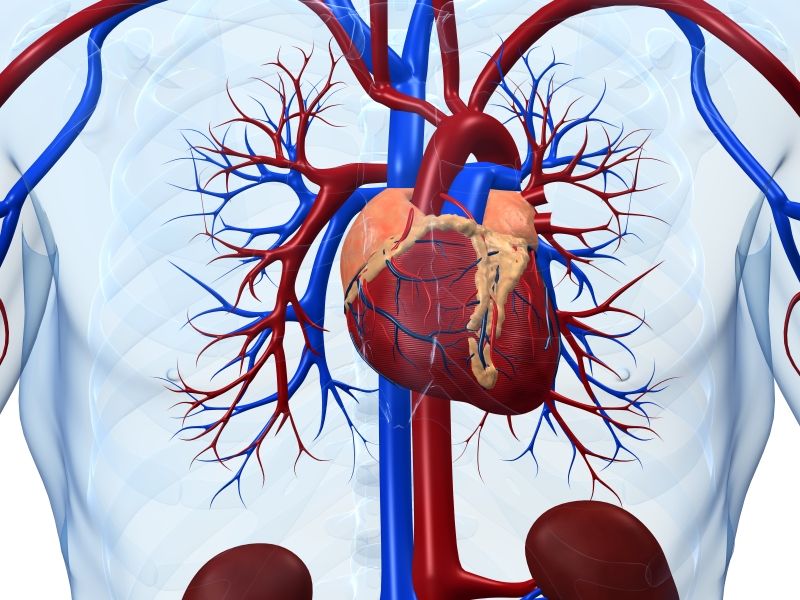

2 The American College of Cardiology recommends that patients with CAD have a target LDL measurement of less than 100 mg per dL, and for those at very high risk, a goal of less than 70 mg per dL (1.81 mmol per L) or treatment with intensive statin therapy should be considered.

8, 9 The National Cholesterol Education Program's Adult Treatment Panel III recommends using statins to achieve LDL levels of less than 100 mg per dL (2.59 mmol per L) in patients with CAD. 4 – 7 Although serious adverse effects such as rhabdomyolysis are rare (less than 0.1 percent), myalgias are a relatively common adverse effect of statin therapy, with discontinuation rates of 5.3 to 7.8 percent in clinical trials ( Table 3 ). There is substantial evidence that statins can benefit patients with CAD, as shown in Table 2. Statins limit the synthesis of cholesterol and increase the catabolism of low-density lipoprotein (LDL) cholesterol. In patients with stable coronary artery disease, aspirin should be used instead of clopidogrel (Plavix) to prevent further cardiovascular events. Recommendations from evidence-based guidelinesĪngiotensin receptor blockers should be used only if an angiotensin-converting enzyme inhibitor is not tolerated.Įvidence-based guidelines 18 and randomized controlled trials 28 – 30Īspirin shows a similar cardiovascular benefit with dosing at 50 mg versus 300 mg per day.
#CAD MEDICAL TRIAL#
The low-density lipoprotein cholesterol level should be lowered before attempting to improve the triglyceride or high-density lipoprotein cholesterol level.Įvidence-based guidelines 2, 3 and randomized controlled trial 13īeta blockers should be considered first-line antihypertensive agents in patients with coronary artery disease. Recommendations from evidence-based guidelines 3 and metaanalysis 8 Statin therapy should be used to achieve a low-density lipoprotein cholesterol level of 70 to 100 mg per dL (1.81 to 2.59 mmol per L) in patients with coronary artery disease.

SORT: KEY RECOMMENDATIONS FOR PRACTICE Clinical recommendation 1 This article focuses primarily on optimal drug therapy for CAD other aspects of CAD management, such as coronary revascularization and treatment of comorbidities (e.g., diabetes mellitus), will not be covered here, although lifestyle modifications are briefly summarized in Table 1. Although CAD caused one out of five deaths in 2005, improved management of the disease has achieved a 34 percent decline in CAD mortality since 1995. Almost 17 million patients in the United States have stable CAD, and nearly 800,000 more will experience an initial event each year. All patients with stable CAD require medical therapy to alleviate symptoms, prevent cardiovascular events, and reduce mortality. 1 CAD results when coronary artery plaque develops, reducing the oxygen supply to the myocardium. Stable coronary artery disease (CAD) is defined as an established pattern of angina pectoris, a history of myocardial infarction (MI), or the presence of plaque documented by catheterization. Familiarity with these medications and with the evidence supporting their use is essential to reducing morbidity and mortality in patients with coronary artery disease. Anginal symptoms of coronary artery disease can be treated with beta blockers, calcium channel blockers, nitrates, or any combination of these.

Aspirin is the first-line antiplatelet agent except in patients who have recently had a myocardial infarction or undergone stent placement, in which case clopidogrel is recommended. If these medications are not tolerated, calcium channel blockers or angiotensin receptor blockers are acceptable alternatives. Blood pressure therapy for patients with coronary artery disease should start with beta blockers and angiotensin-converting enzyme inhibitors. Statins have demonstrated clear benefits in morbidity and mortality in the secondary prevention of coronary artery disease other medications that can be used in addition to statins to lower cholesterol include ezetimibe, fibrates, and nicotinic acid. Lipid-lowering therapy is necessary to decrease low-density lipoprotein cholesterol to a target level of less than 100 mg per dL, and physicians should consider a goal of less than 70 mg per dL for very high-risk patients. Three classes of medication are essential to therapy: lipid-lowering, antihypertensive, and antiplatelet agents. All patients with stable coronary artery disease require medical therapy to prevent disease progression and recurrent cardiovascular events.


 0 kommentar(er)
0 kommentar(er)
